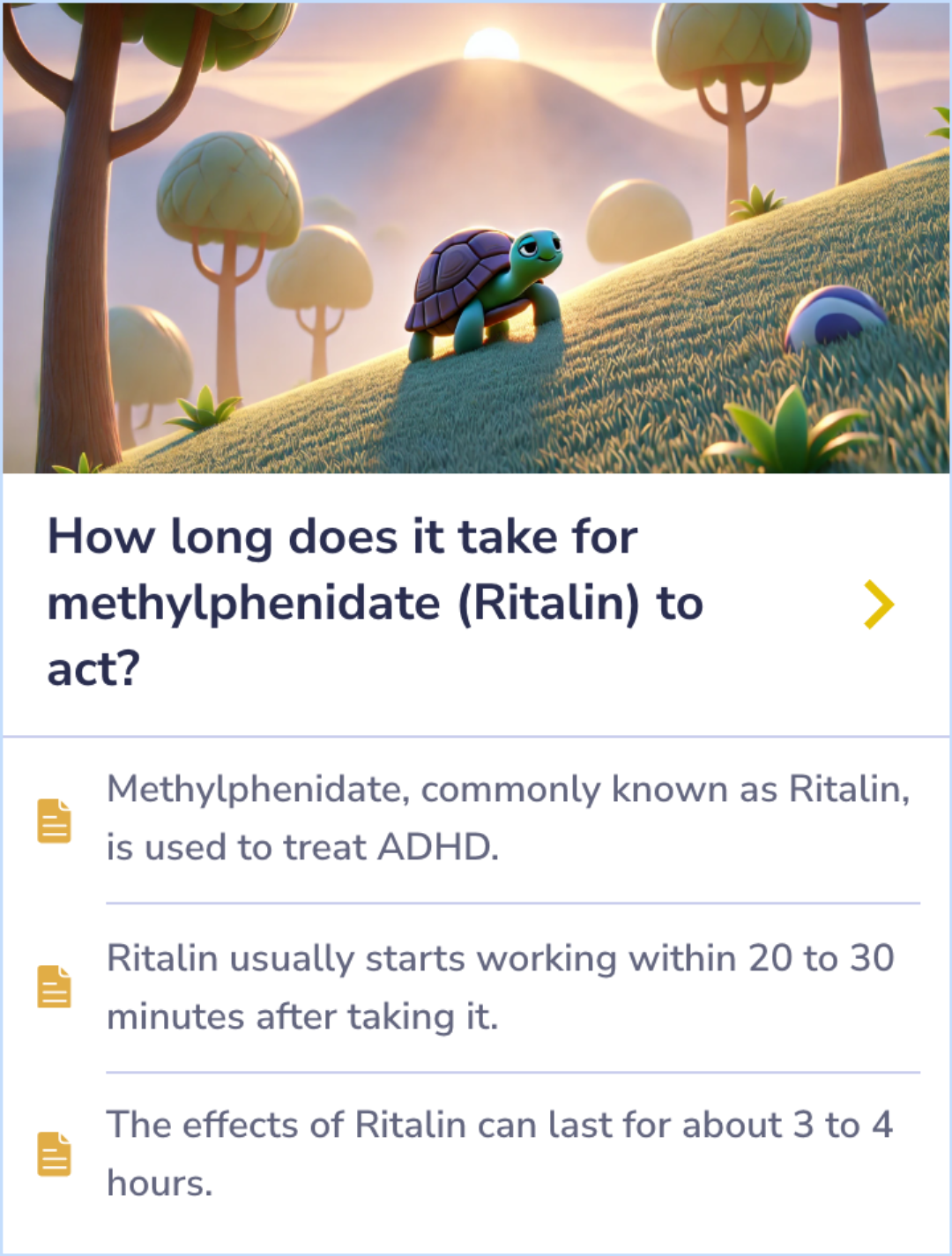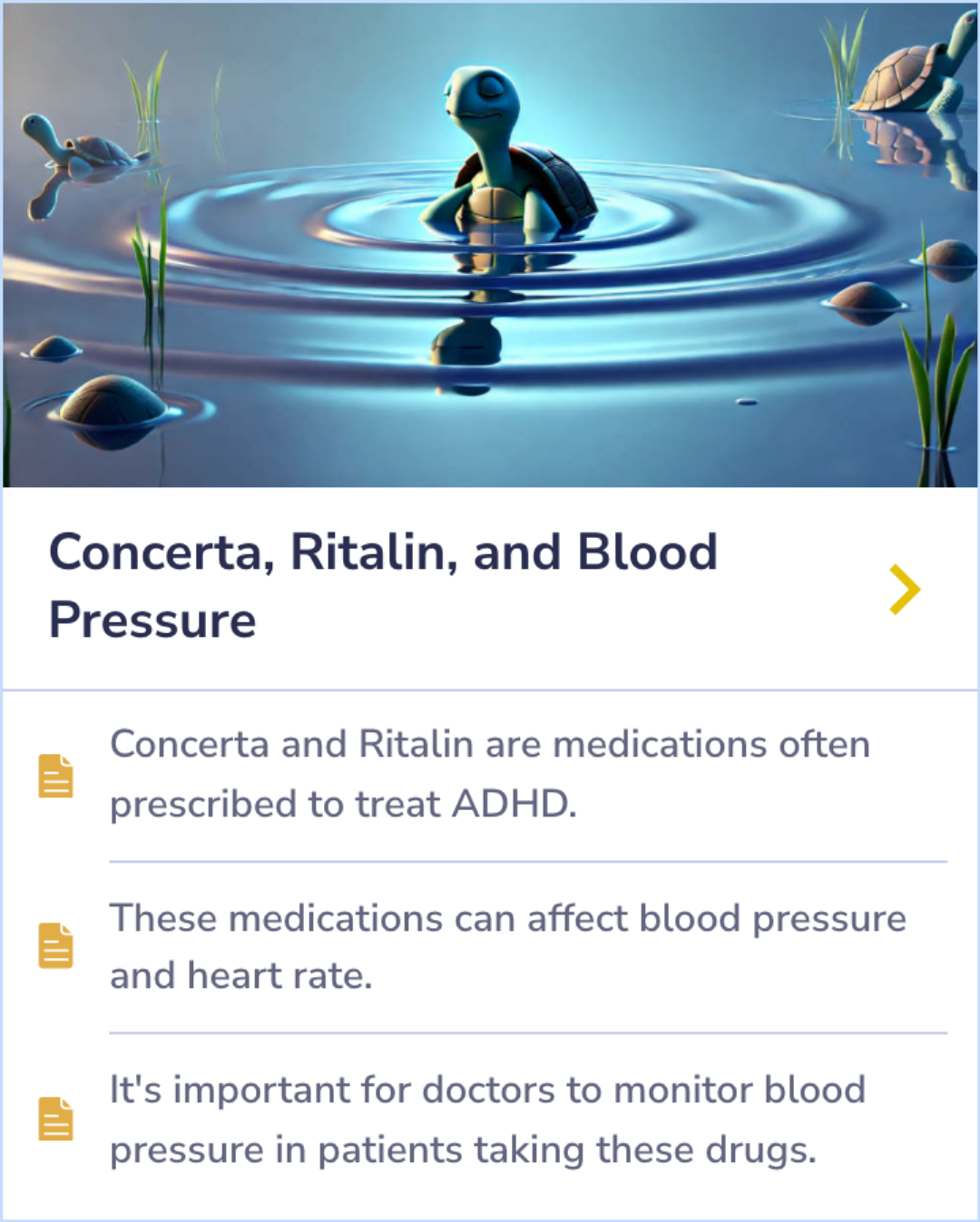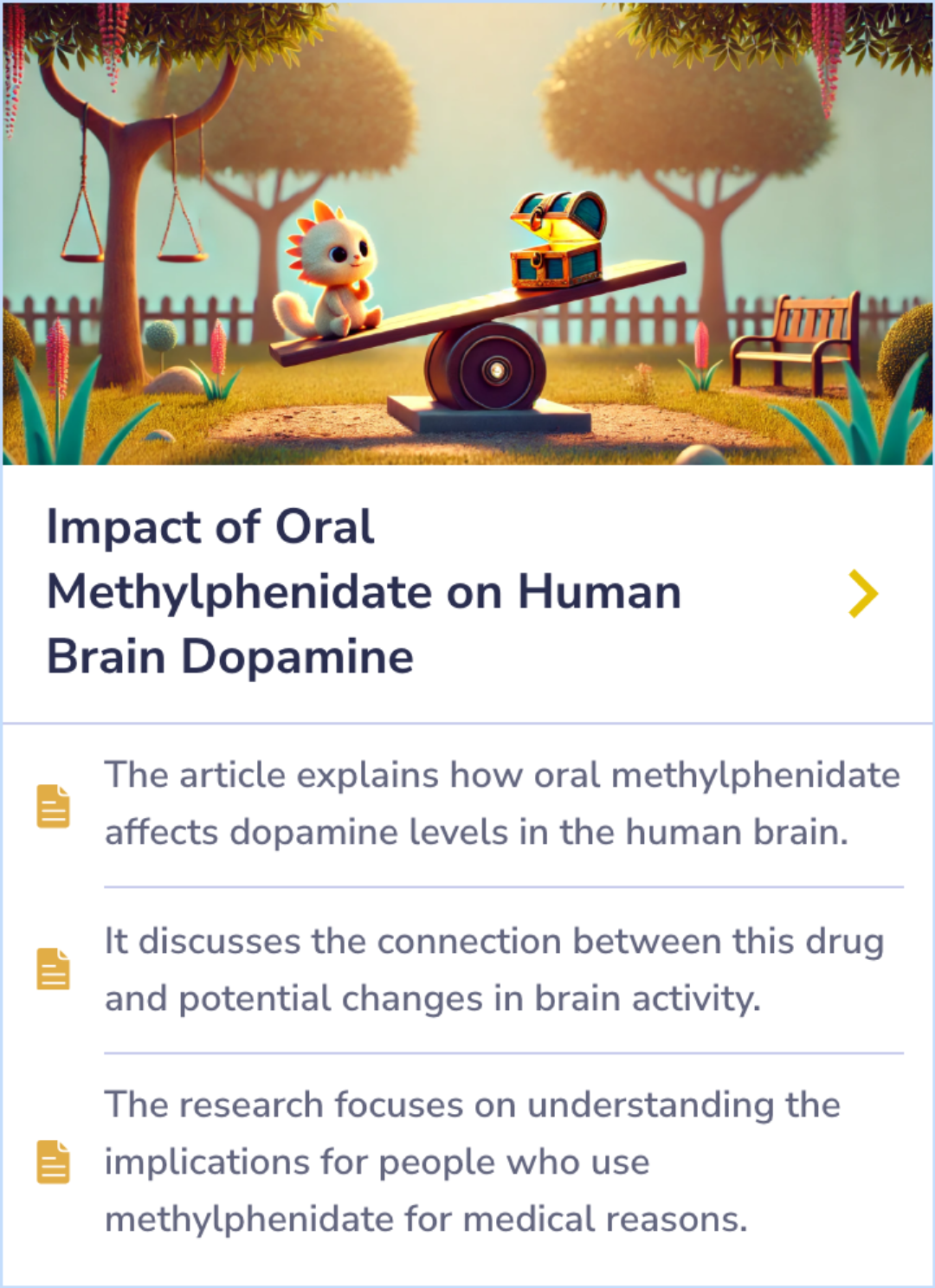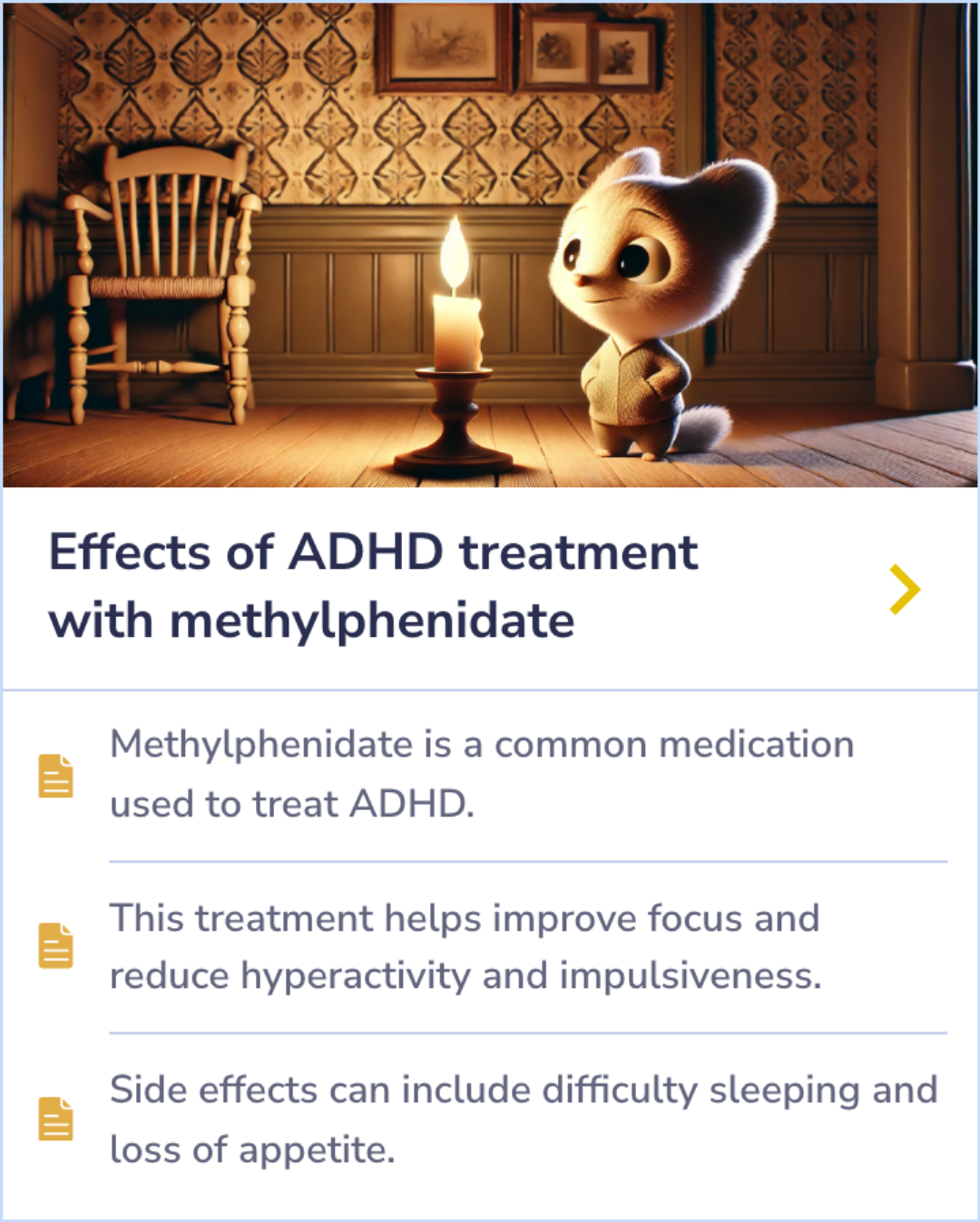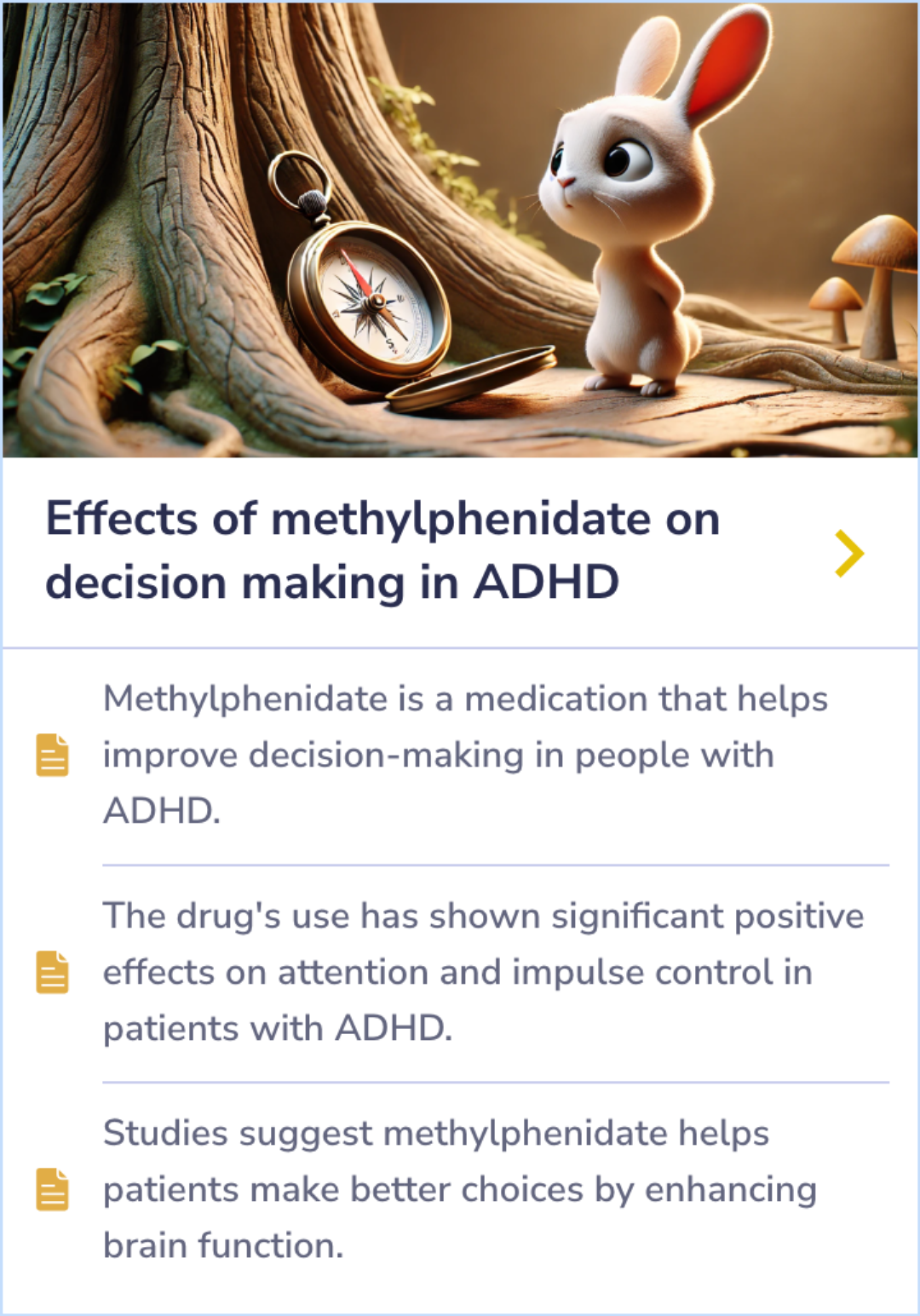Ritalin
Evidence Based Answers
How Ritalin is absorbed by your body
Ritalin, absorbed mainly in the small intestine, travels through the liver, where it's broken down to maintain effective drug levels. Most of the drug is then cleared via urine.
Published: October 25, 2024
Click to explore a section:
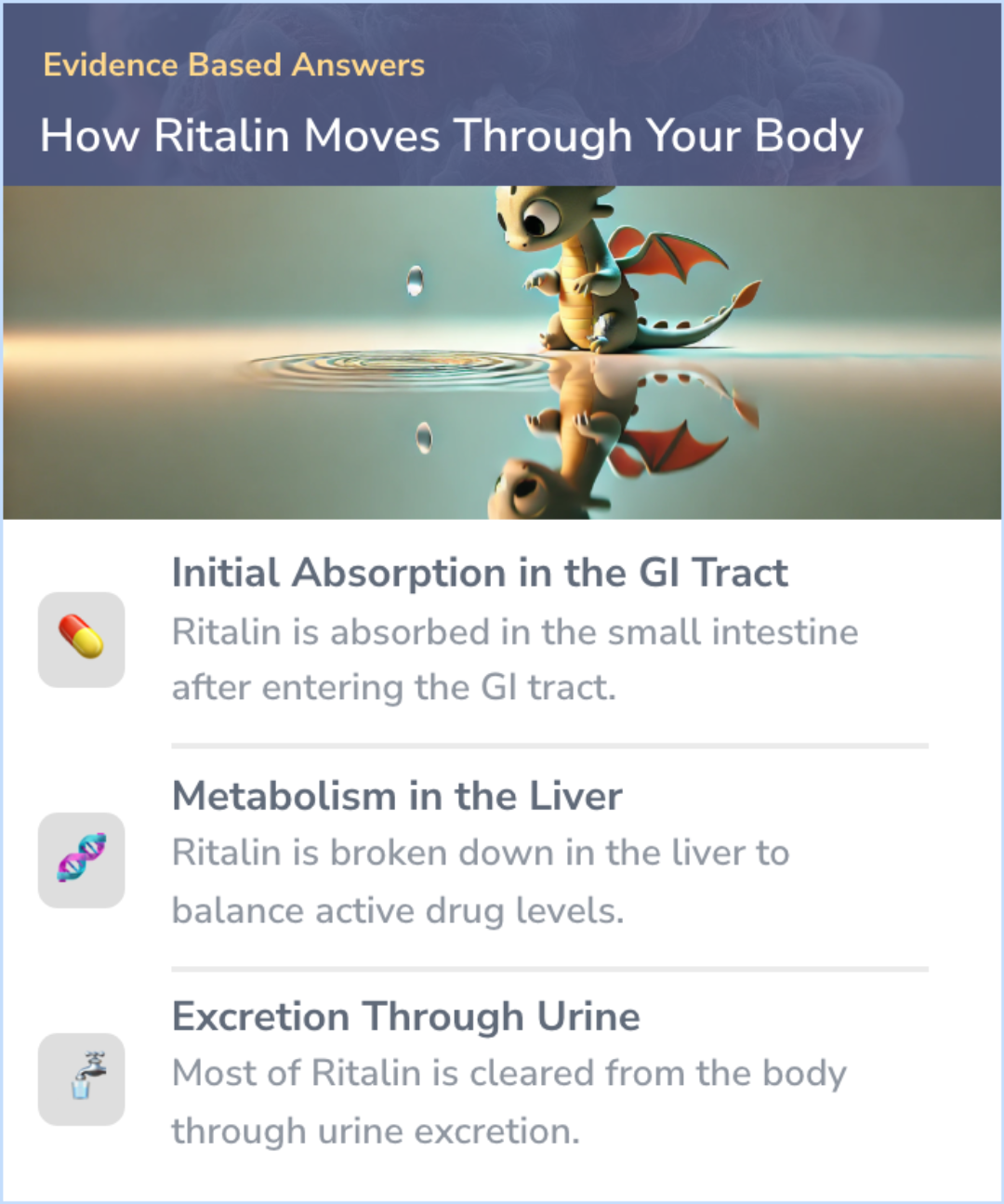
Ritalin is absorbed in the intestine, processed in the liver, and cleared mainly via urine.
How Ritalin is Absorbed
Ritalin, or methylphenidate, is used to treat Attention Deficit Disorders and narcolepsy. It comes in regular and sustained-release tablets. When taken orally, Ritalin begins its absorption process in your body.
This journey involves absorption, distribution, metabolism, and excretion. Understanding this process helps us see how Ritalin works to improve focus and attention.
This journey involves absorption, distribution, metabolism, and excretion. Understanding this process helps us see how Ritalin works to improve focus and attention.
“
Source Quotes:
Ritalin hydrochloride, methylphenidate hydrochloride USP, is a mild central nervous system (CNS) stimulant, available as tablets of 5, 10, and 20 mg for oral administration.
Methylphenidate is FDA-approved for treating ADHD in children and adults and as a second-line treatment for narcolepsy in adults.
Absorption in the Gastrointestinal Tract
After you take a Ritalin tablet, it travels through your gastrointestinal (GI) tract. The active ingredient, methylphenidate, is absorbed primarily in the small intestine. The GI tract plays a key role in breaking down the tablet and allowing the active ingredients to enter your bloodstream. The bioavailability of the drug can vary based on the formulation. Immediate-release tablets reach peak plasma concentration faster than extended-release tablets, which are designed for slower absorption.
“
Source Quotes:
After oral administration, methylphenidate is almost completely absorbed... Peak plasma concentrations occur 1 to 3 hours after an oral dose of standard methylphenidate.
The bioavailability for extended-release tablets is 105% in children and 101% in adults compared to immediate-release tablets.
How Ritalin is Metabolized in the Liver
Once methylphenidate gets into your bloodstream, it travels to the liver. The liver breaks it down into active and inactive forms.
This process helps control how much active drug reaches the brain and other parts of your body. Specifically, methylphenidate is converted into ritalinic acid, which is inactive, ensuring the right amount of active drug to affect the brain.
This process helps control how much active drug reaches the brain and other parts of your body. Specifically, methylphenidate is converted into ritalinic acid, which is inactive, ensuring the right amount of active drug to affect the brain.
“
Source Quotes:
Methylphenidate undergoes metabolism by the liver to ritalinic acid through de-esterification via carboxylesterase CES1A1.
Methylphenidate is rapidly metabolized and excreted in urine, primarily as the inactive metabolite ritalinic acid.
Excretion from the Body
The final step in the absorption process is the excretion of the drug from the body. Ritalin and its metabolites are primarily excreted through the urine. This process helps to clear the medication from your system, ensuring that it does not build up to harmful levels. Most of the drug and its metabolites are eliminated through the urine, with smaller amounts excreted in feces. Proper excretion is important to prevent accumulation and potential side effects.
“
Source Quotes:
After oral administration, 50 and 90% of the dose was excreted in urine by 8 and 48 hours, respectively.
A majority of the drug (78% to 97%) is excreted in the urine, while small amounts are excreted in feces.
Effect of Food on Absorption
Clinical practice typically recommends taking Ritalin 30 to 45 minutes before meals because the presence of food may interfere with the absorption of the drug. However, studies have shown mixed results. In some cases, food did not significantly affect methylphenidate absorption in healthy adults or hyperactive children, while in others, concurrent food ingestion accelerated absorption.
“
Source Quotes:
Current clinical practice calls for the administration of methylphenidate 30 to 45 minutes before meals... food may interfere with absorption.
While meals may interfere with absorption... meals accelerate rather than impede the absorption of methylphenidate.
Distribution to the Brain
After metabolism in the liver, the active form of methylphenidate is distributed throughout the body, including the brain. The brain is the primary site where Ritalin exerts its effects, helping to increase attention and decrease impulsivity and hyperactivity in individuals with ADHD. Methylphenidate works by blocking the reuptake of dopamine and norepinephrine, increasing their levels in the brain. This mechanism helps improve focus and reduce symptoms of ADHD.
“
Source Quotes:
Ritalin presumably activates the brain stem arousal system and cortex to produce its stimulant effect.
Key Takeaways
Conclusions
The journey of Ritalin in your body begins when you take it orally, allowing it to be absorbed in the gastrointestinal tract, primarily in the small intestine. From there, it enters the bloodstream and travels to the liver, where it is metabolized into active and inactive forms.
Following metabolism, the active form of Ritalin is distributed throughout the body, reaching the brain where it exerts its beneficial effects by increasing levels of dopamine and norepinephrine. Finally, the drug is excreted from the body, primarily through urine, ensuring that it does not accumulate to harmful levels. Understanding this process underscores how Ritalin works to improve attention and reduce symptoms of ADHD.
Following metabolism, the active form of Ritalin is distributed throughout the body, reaching the brain where it exerts its beneficial effects by increasing levels of dopamine and norepinephrine. Finally, the drug is excreted from the body, primarily through urine, ensuring that it does not accumulate to harmful levels. Understanding this process underscores how Ritalin works to improve attention and reduce symptoms of ADHD.
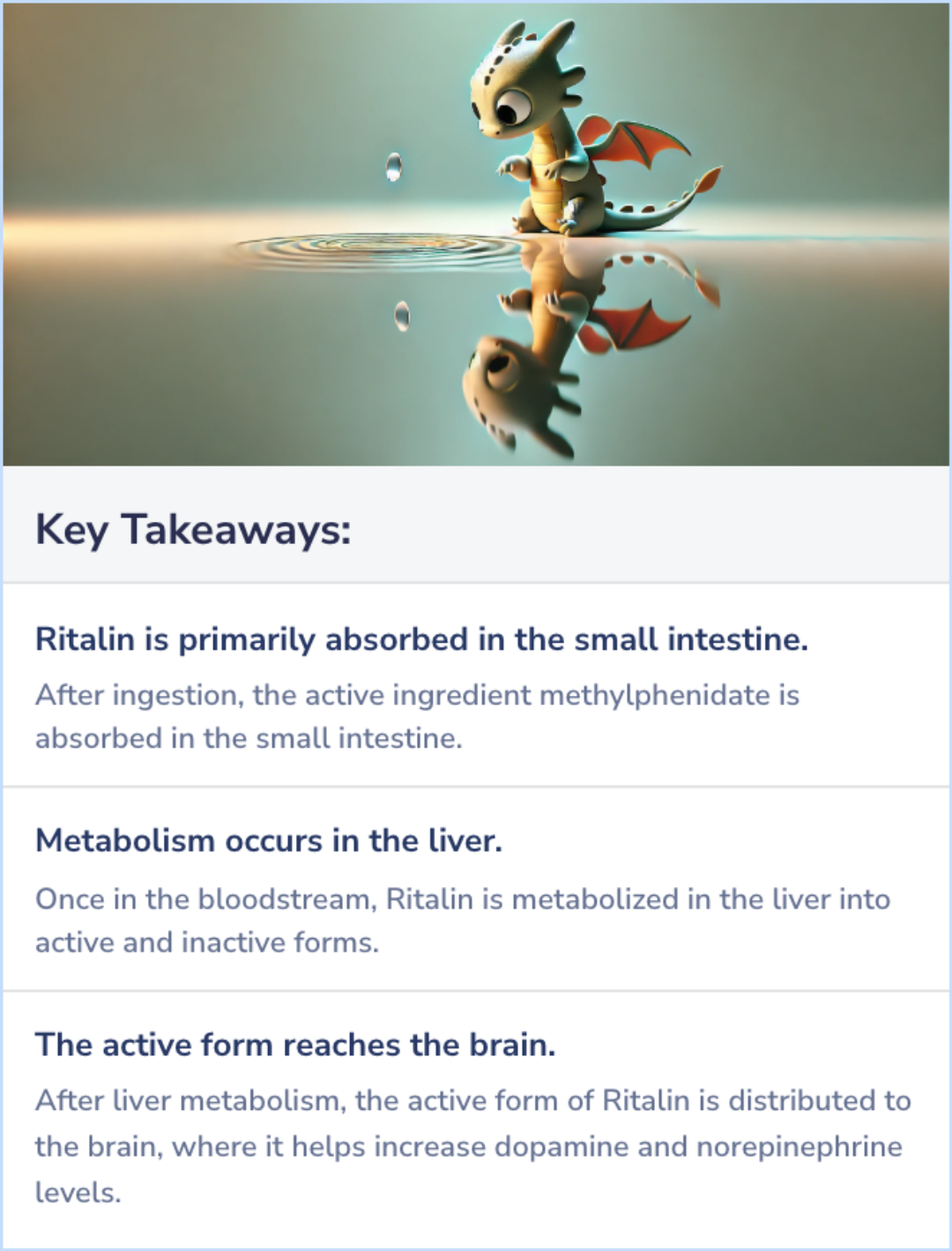
Evidence Summary
Ritalin's Timing: When It Starts and How Long It Lasts
Methylphenidate, known as Ritalin, is commonly used to treat ADHD. After taking it, its effects usually begin within 20 to 30 minutes. These effects last for approximately 3 to 4 hours, which can help manage daily routines smoothly.
The timing of when Ritalin starts to work and how long it lasts are key to organizing activities and ensuring its therapeutic benefits align with daily demands.
The timing of when Ritalin starts to work and how long it lasts are key to organizing activities and ensuring its therapeutic benefits align with daily demands.
Evidence Summary
Monitoring the Cardiovascular Impact of ADHD Medications
Concerta and Ritalin, two common ADHD medications, can impact blood pressure and heart rate. This highlights the need for regular check-ups to monitor these effects.
Doctors should keep a close watch on blood pressure and heart rate in patients taking these drugs to ensure their overall safety during treatment.
Doctors should keep a close watch on blood pressure and heart rate in patients taking these drugs to ensure their overall safety during treatment.
Evidence Summary
How Methylphenidate Affects Brain Chemistry
Taking methylphenidate affects dopamine levels in the brain, potentially leading to changes in brain activity. The research explores how these changes might influence behavior in individuals using this medication. By examining these effects, we gain insight into how methylphenidate interacts with the brain's chemistry.
This understanding ties back to the broader exploration of how the drug is absorbed and metabolized within the body.
This understanding ties back to the broader exploration of how the drug is absorbed and metabolized within the body.
Evidence Summary
Managing ADHD Symptoms with Methylphenidate
Methylphenidate, commonly known as Ritalin, is used to treat ADHD. It enhances focus and alleviates symptoms like hyperactivity and impulsiveness. However, users may experience some side effects, such as difficulty sleeping and loss of appetite.
The medication is a double-edged sword: effective in managing symptoms but with potential drawbacks that must be considered.
The medication is a double-edged sword: effective in managing symptoms but with potential drawbacks that must be considered.
Evidence Summary
How Methylphenidate Enhances Decision-Making in ADHD
Methylphenidate, commonly used to treat ADHD, improves decision-making by enhancing attention and impulse control. Studies highlight its effectiveness in helping patients make better choices through improved brain function.
This medication not only boosts focus but also strengthens the ability to resist impulsive behaviors, leading to more thoughtful and deliberate actions.
These benefits contribute to better outcomes in daily decision-making for individuals with ADHD.
This medication not only boosts focus but also strengthens the ability to resist impulsive behaviors, leading to more thoughtful and deliberate actions.
These benefits contribute to better outcomes in daily decision-making for individuals with ADHD.
